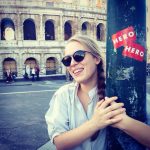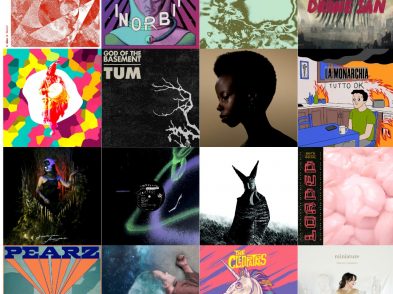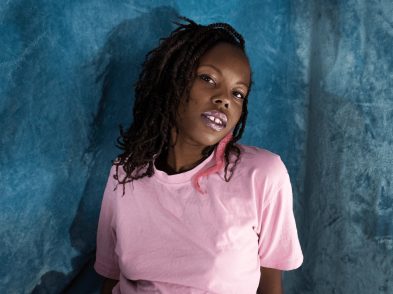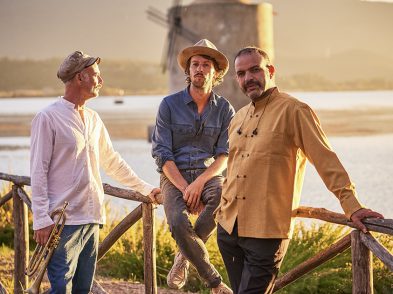A tentacular network made of young beats and new ideas is swarming all throughout our Italian peninsula, and Florence has become an important point of reference for all things electro. This probably doesn’t come as a surprise to those who have been following our recent forays into the electronic arts scene. We can comfortably affirm that the “Made in Italy” appeal now also applies to music and has bred important collaborations even overseas. Only in the past months, Florentine producer Clap! Clap! signed with world-renowned Warp Music Publishing (home of international electro-stars such as Aphex Twin, Flying Lotus, Boards of Canada and Squarepusher) and Italian beatmaker Dj Khalab won the prestigious “Track of the Year” Worldwide Awards created by acclaimed British Deejay and BBC Radio 6 speaker Gilles Peterson. Milan-based artist Go Dugong, aka Giulio Fonseca, is another talent on the rise and the star of this evening’s Feline Funk event at COMBO Social Club in Florence, where he will give an exclusive presentation of “Novanta”, his latest musical venture produced by Florentine label Fresh Yo!.
From band member to solo producer, tell us a bit about yourself as a musician.
My first approach to music dates back to 1995. I was 14 years old and had a Commodore AMIGA 500, one of the first pcs on the market. Normal computer games bored me so when I stumbled upon a Protracker sequencer I started producing my first beats, drawing inspiration from the then blooming Italian hip hop scene. A few years later I started playing bass with 3/4ths of what would later become the indie-rock band Kobhenavn Store. With this project and the introduction of analog instruments I kind of abandoned the sound of my two previously released solo demos which at the time latched onto more berlin-style electronica and glitch-hop vibes. When the band decided to take some time off, Go Dugong was born out of my need to get back to the basics, to return to the electronic dimension that had fostered my artistic growth in those early years.
Go Dugong. In my mind this name evokes images of the Far East. Is this impression intentional or accidental?
I would say that it’s accidental but not quite. The dugong is a marine mammal and I wanted the project’s name to recall certain underwater perspectives. I actually have experimented in the past with samples extracted from traditional chinese music. I added “Go” following the suggestion of Nicola Curtarelli, a friend and Kobenhaven Store band member. It gave the name an amusing twist and made me think of something percussive.
I’m under the constant impression that the Italian electronic music scene is in the midst of a revival and that Florence is playing a crucial role thanks to a number of attentive event planners and labels. What do you think, am I perhaps seeing double?
This is actually quite a hot topic right now. The Italian electronic scene is thriving and packed with real talent proven by the international ascent of local names like Clap! Clap!, Dj Khalab, Jolly Mare, Populous. The sad thing is that these are rare exceptions and the scene rarely manages to go beyond national borders. Florence has become an important driving force and reference point especially thanks to figures like my label Fresh Yo!, that is also behind important events like the national Beat Convention. But it’s hard to reach huge audiences, because unlike other countries that have a more international approach the Italian music industry tends to remain confined within the fine lines of its national boundaries.
What kind of music do you usually listen to?
I must admit that I rarely listen to electronic music or set out to discover up-and-coming acts. Having to divide my day between making music and another job leaves me with very little time to explore new tunes.This is also due to the fact that I try to concentrate mostly on stuff I can use as samples and inspiration in my compositions, so African, Latin, Arabic, psychedelic…mostly retro stuff from the 70s onwards.
Tonight at Combo Social Club you will be officially presenting your new album “Novanta”. Tell us a bit about this freshly released endeavor.
“Novanta” sums up my musical attempts to translate into music the multicultural melting pot that first characterized the big cities at the turn of the 20th century. Every song is an actual collage of sound fragments from different parts of the world, the numerous cultures that inhabit our cities. These sounds harmoniously coexist and are united by their “urban” nature, a “street” vibe that digs its roots deep into the fertile dimension of hip hop. “Novanta” is also the name of a circular line of trolleybuses in Milan that national newspaper Corriere della Sera once described as “Well-beloved: it’s the only transport line that leaves its mark all over the city, cutting around the metropolis like a compass for 20,8 Kilometers, 24 hours a day. Deeply despised: the crowds, the stench, the night-time risks and the endless waiting. This trolleybus, together with its counter-clockwise ally n°91, traces a truthful portrait of working-class Milan, an ever-changing flow of faces, colors and smells. It collects both those who burn the midnight oil and those who leave for work at dawn. Those who live in the suburbs and those who are homeless and stay on board to keep warm during the dark, cold hours. It more or less gives life to a temporary coexistence of communities, from Chinese to Sinhalese, Arabs, Romanians and Africans. Trolleybus n°90 is the queen of the ATM public transportation network.” I think that this metaphor perfectly embodies what I wanted to communicate.
To create the album’s artwork you collaborated with Florentine artist Jonathan Tegelaars. How did you two meet and how did you develop the concept for the cover?
I had seen some of Jonathan’s collages on a series of flyers by Killabros, another Florentine organization focused on electronic music. But it was thanks to an article published on Florentine free-press FUL Magazine that I really got to dig into and appreciate his work. It was the perfect match: as I previously mentioned, “Novanta” is in its own way a collage of sounds so it just seemed natural to me for Jonathan to work in this direction. We were put in contact through mutual friends and we immediatly started working on the visual aspect of the album, from the actual artwork to the music video.
Combo Social Club
Via Mannelli 2
Live starts at 10.30 pm
Ticket: 10 €








